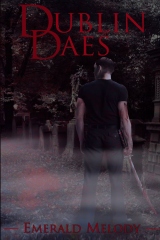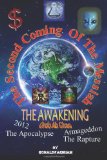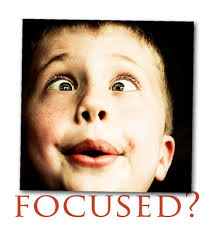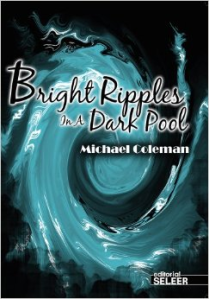15 Do-It-Yourself Tools to Promote Your Book

You’re not a New York Times bestselling author. You don’t have a publicist. And your Amazon sales numbers are awful. Should you quit writing books?
Absolutely not.
No matter what kind of book you’ve written (or plan to write) there are many ways to reach your audience. Each of the DIY tools listed here are low or no-cost, and each of them works in its own way. One or more may be perfect for you.
Fifteen ideas might seem overwhelming, but remember that you only need to do one thing at a time. As one clicks and then another, you’ll soon be reaching your audience.
The bottom line is to practice selling your books one by one. Author and publisher Michael Wiese has been writing and marketing books successfully for over three decades. He tells all his forty-plus authors “Sell one book at a time.”
Instead of trying to sell your book to faceless thousands, find one person who needs and wants your book. Offer your book to that person. Repeat.
Slower than you want, but faster than you think, you may become a best-selling author.
1. Start Early
The most powerful and essential steps you can take toward promoting your book begin long before the actual writing of the book. Three years before the book is published–if you can–start building a network of supporters and reviewers. Keep track of everyone you meet as you research and write the book. Pay special attention to, and make notes about, those who demonstrate a genuine enthusiasm for you and your project.
As the project evolves, keep in touch with these people. You might send them an occasional email, or keep in touch via a social networking site like LinkedIn or FaceBook.
For significant milestones–the signing of your book contract, the completion of the manuscript, the arrival of the galley proofs, and the arrival of the finished books–you might bring key people together for a house party. At the house party, you could read short excerpts from your book and answer questions about the project.
2. Contribute to Web Forums
Every field has at least one or two forums that people interested in your subject know and read. Find and join these forums.
Contribute to them freely. Give advice and reach out. Offer to help others. Put a link to your blog or website in your signature line. When you have a book contract and/or a book title, add the title to your signature line.
3. Start a Blog
Early in the process of researching and thinking about your book, start a blog. Add 120-130 words each day of helpful, inspirational information on issues in your field, which are related to the subjects in your book. Aim to create a genuinely useful body of knowledge over the following 12 months.
4. Write a Remarkable Book
Set out to write a remarkable book. If your book is not remarkable, keep working on it until it is. Give the manuscript to ten friends and ask for honest feedback. Find a brilliant editor (you can find such an editor at EFA) and pay him or her to edit your manuscript. Revise. Repeat.
Don’t stop until your reviewers start saying things like: “I loved it! This book is amazing!”
A remarkable book will generate word-of-mouth publicity. One person will read it, and recommend it to his or her friends. They will recommend it to their friends. This is the best publicity you can get.
5. Cultivate a Positive Attitude about Book Promotion
Think of book promotion as storytelling. The story you are telling is why you wrote your book, how it can help others, and how the world will benefit from your book.
If you can develop a positive attitude about book promotion, people will pick up on it, and tune in immediately. Some writers resent the chore of marketing. Their attitude seems to be, “I’m a writer. Marketing is the publisher’s job. Promoting my own book shouldn’t be my responsibility.”
Unfortunately–unless you are Stephen King or Malcolm Gladwell–the publisher probably won’t have the budget to market your book. If you don’t promote your book, no one else will.
6. Create a Media Kit
Your media kit should include:
* Professionally printed business cards with the book cover on one side and your contact information on the other side. Do not try to print them on your home printer. This is a time to invest in your product and yourself, not save money.
* A head shot by a professional photographer or a talented amateur. It should be well lit, with a neutral background. Your eyes should sparkle.
* A 100 – 150 word biography. The main purpose of the biography is to tell a reader why you are uniquely qualified to have written this particular book.
* A ‘one-sheet’ for the book: a single piece of paper with a glossy print of the book cover on one side and a one-page description of the book on the other side. Be sure to include a few short blurbs and recommendations from colleagues and friends in the description.
7. Create a Book Pitch
Consider writing at least three sales pitches for your book: 10 seconds, 30 seconds, and 60 seconds. When someone asks what the book is about, give them the 10 second pitch. If the person responds with interest, have a longer pitch ready!
Practice your pitches on friends until they tell you the pitches work.
8. Build a Website
As publication day approaches, build a full website. The website should include:
* A book blog, in which you write updates, corrections, errata and respond to reader comments and suggestions. This book blog may become the basis for the second edition of your book.
* Sample chapters from your book
* A link to the Amazon page for your book, so people can buy the book online
* Your media kit (see step 5)
* Book reviews and blurbs.
* Your schedule of appearances, including bookstores, speaking engagements and conferences
* Contact information.
9. Get Book Reviews from Individuals
Six months (nine if possible) before the book is due to appear in book stores, start asking people for reviews and blurbs. Send reviewers a printed galley proof of your book. If you don’t yet have printed galley proofs, send a PDF containing the first two chapters, a table of contents and your bio.
Don’t be afraid to approach the ‘biggest names’ in your field. (This is important.) Ask for both reviews and blurbs. Busy people may only have time to write a few sentences.
A word about PDFs: check with your publisher about their policies on review copies. Many publishers will NOT allow you to send out a PDF copy of the entire book. They are afraid the book will be stolen.
10. Write Articles
Every field has eZines, websites and magazines that advocate or deal with the subject of your book. Find them. Once you know where they are, look through them and figure out which ones talk to the audience for your book. Contact those sites or publications and pitch articles that will be of interest to their readers.
Schedule articles to appear around the time your book will appear in bookstores and on Amazon. For example, if your book is going to appear in bookstores and on Amazon in mid-June, schedule your articles to appear in July, August, and September.
Remember to pitch articles early, because many magazines and eZines have a 3-6 month lead time. Mention your book title somewhere in the article. In online articles, link the book title to its Amazon page so readers can click over and buy the book.
11. Get Book Reviews from eZines and Magazines
Ask websites, eZines and magazines in your field to review your book. Some websites or eZines may offer to trade, to review your book if you write an article for them. For example, earlier this year I contacted Writers Store and offered to write an article about what I learned while promoting my most recent books:Producing With Passion and Digital Video Secrets. This article is the result of that contact.
12. Get 20 Amazon Reviews
Amazon reviews are amazingly effective. Everyone from book buyers to publishers reads them.
Your goal is to get at least 20 reviews. Contact everyone you know and ask each of them if they would give your book an honest review. Let them know it can be brief. If they agree, send them either a galley proof, a promotional copy of the book, or a PDF containing a table of contents, two sample chapters, and your bio.
Amazon’s Top Customer Reviewers are another source of high-value reviews. Find the reviewers who deal with books in your area. Write to them. Tell them you have written a book they might be interested in, and that you’d appreciate a review. If they respond, send them a galley proof or a promotional copy of your book.
13. Get Mentioned in email Blasts
Look for organizations in your field that send large-volume emails. Try to get your book reviewed in their email or newsletter. When the number of people receiving the emails is 100,000 or more it’s sometimes referred to as an email blast.
14. Speak at Conferences
As a published author, you have the qualifications necessary to speak at conferences. Contact conference organizers at least 6 months in advance. At first you may have to register and pay a fee to speak. Later, when you become better known, conferences may seek you out, and may even pay you to speak.
You should be prepared to give a 45 minute presentation. A useful way to structure a 45 minute presentation is to speak for 30 minutes, and take questions from the floor for the last 15 minutes. Plan to take a few minutes after your speech to circulate with the audience. Have a table in the back of the room where you or someone on your team sells books.
15. Make and Post Online Videos
Make a few 5 minute videos (or a series of videos) of yourself talking about key issues in your field. Put the book title and URL on the bottom of the video screen and in the credits.
Post your videos on several of the many video sharing sites including sites like blip.tv, jumpcut, ourmedia, Vimeo, vSocial and YouTube. Embed the video clips on your website.
Plan on following your promotion plan–perhaps an hour a day–for at least a year. Resolve to do something every day on promotion. Remember – follow-up and persistence are the keys to success.
By Tony Levelle Edited by Prydain Publishing










